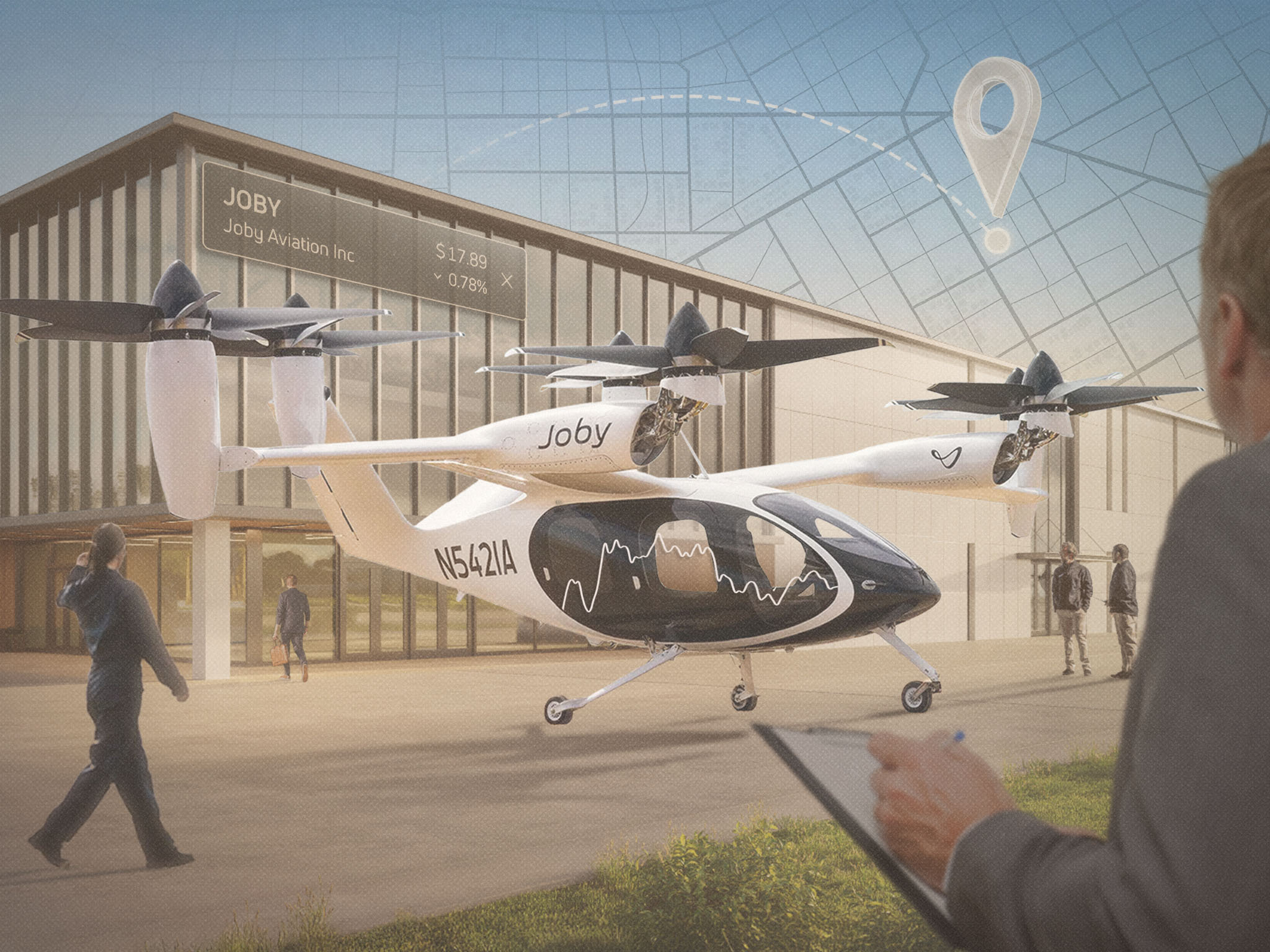Two businesses focused on personalized air transportation — Joby Aviation (NYSE: JOBY) and Blade Air Mobility — raise many questions about technology, transportation, and the practicality of modeling our future on “The Jetsons.”
“The Jetsons” was a prime-time cartoon that debuted in 1962, five years after Sputnik 1 began orbiting the Earth. This cosmic knock-off of “The Flintstones” provided a whimsical look at America’s space-age future. Floating cities, video phones, robotic pets, even wisecracking robot maids (“I swear on my mother’s rechargeable batteries”) were on hand. And — of course — everyone traveled in flying cars.
In the ensuing six decades, we’ve been treated to real-life versions of “The Jetsons” tech that includes wireless video chats, flat-screen TVs, robotic house cleaners, and tiny pill cameras we can swallow to inspect our innards. Still, we’re all awaiting the arrival of “aerocars.”
Not that the technology doesn’t exist. It does, and with the six-engine, four-passenger electric vertical takeoff aircraft from Joby verging on FAA certification, air taxis may soon be here. Which brings us to three questions about the business of new technology:
- Does it work?
- Is anybody buying it?
- Is this a product or a business?
The first two queries are easy: The Joby S4 aircraft has passed a slew of tests and could soon be certified by the FAA for commercial use. Additionally, Joby delivered its first plane to Edwards Air Force Base in 2023 as part of a $131 million contract with the Defense Department.
Is it a business?
So the product is viable, and the military is already buying it. But is it a business? That breaks down in two ways: Is there a market for the planes, and is there a market for an air-taxi service from Joby or any other provider?
There’s definitely some kind market for the planes, known technically as electric vertical take-off and landing aircraft, or eVTOLs. The market has been estimated at more than $2 billion in 2024, growing rapidly to a potential valuation of $28.61 billion by 2030.
The aircraft are quiet and nonpolluting, and can land in tighter spaces than helicopters. Uses for the planes include delivery and logistics, medical transportation, and transportation between small private and regional airports and. Perhaps someday there will be networks of specially designed “vertiports.”
When it comes to air taxis and air ride-sharing, the picture gets murkier. Murky enough that Blade decided to focus on medical transport and logistics and sell its passenger transportation operation to Joby.
The deal covers 12 terminals in the U.S. and Europe, many at airports, which handled 50,000 passengers in 2024. The Aug. 4 announcement of the deal briefly lifted Joby shares from $18.38 to more than $20 before closing the week at $16.64. Shares of Blade traded at $3.90 before the sale announcement, closing the week at $3.94.
The barriers to go-anywhere air taxis include safety regulations, lack of infrastructure, and regulatory and zoning challenges. In 2022, Joby signed a partnership with Delta Air Lines to deliver a home-to-airport air taxi service. But that would rely heavily on whether municipalities allow eVTOLs to land in your driveway, and whether power lines, phone and light poles, or even your neighbor’s oak tree make that impossible.
Regulatory issues
Regulatory challenges include building a traffic system and monitoring that can keep eVTOLs from crashing into each other, or hitting any of the many unmanned drones delivery services want to deploy. Directing all those vehicles would require developing an entirely new air-traffic system, even while the U.S. can’t staff control towers for the current level of air travel.
Finally, there’s the cost. Joby’s aircraft require pilots, who already are in short supply. And, while eVTOLs are small, pilots aren’t going to come as cheaply as Uber drivers. One now insolvent eVTOL maker said it could sell the aircraft for $2.5 million with a life of eight years, generating $5 million in annual revenue.
To hit that number, each aircraft would need to generate $13,700 in sales every day of the year. If all four seats were filled and the craft made one trip every hour of the day, the fare would be nearly $150 per passenger. That rules out hailing an air taxi to drop off your kid at school, but it could be well worth it for people who want to replace a four-hour drive with a 15-minute flight.
It took nearly 60 years for some of “The Jetsons” technology to become an everyday reality. But, with half-a-dozen publicly traded companies already building vertical flight aircraft, the question of whether flying taxis will be next should be answered much sooner.




Comments